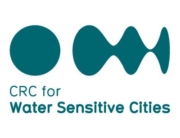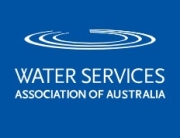The Living Streams webinar was truly inspiring, it discussed how we can transform urban spaces through thoughtful design that puts people and natural systems at the centre of design (a nature-based approach to stormwater).
On 10 August 2023, more than 220 WSUD practitioners from around Australia came together for the Living streams webinar. This was the first forum of the National WSUD Community of Practice to discuss how to transform urban spaces through thoughtful design that puts people and natural systems at the centre of design (a nature-based approach to stormwater).
The presentations showed that anything is possible if we approach development or urban renewal with a shared, clear vision for the space – that includes a commitment to natural spaces, protection or enhancement of biodiversity values, management of flow regimes, and improved water quality. The projects showcased at the Living Streams webinar never wavered from these goals – and the results are incredible.
![]() You can watch all of the Living streams videos now, or read on for an overview of each presentation.
You can watch all of the Living streams videos now, or read on for an overview of each presentation.
Water management – a traditional owner’s perspective, South Australia
Corey Turner, South Cultural Immersion, provides a traditional owner’s perspective, presenting a compelling case for why we should be granting our urban streams living entity status, and in doing so provide greater protections for their cultural and ecological values. Corey demonstrated how obstructions and development within riparian zones limits future opportunities to create living streams, and invited participants to consider what a watercourse restoration fund might look like.
The living waterways framework, Queensland
Rachael Nasplezes and Georgia Glidden, Healthy Land & Water, take participants through project assessment criteria within the living waterways framework under the categories living water, living environment, living communities and living local economies. This framework promotes the integration of stormwater systems and stormwater treatment into natural landscapes by incorporating the natural, historical and cultural elements of a site. It is a valuable resource for anyone setting out to undertake a living streams project.
Our final three speakers shared the design processes from some awe-inspiring projects involving the conversion of concrete drains and highly degraded farmland to highly biodiverse linear parks and waterways.
New Town Rivulet Project, Tasmania
Nigel Vivian, Sugden & Gee, describes how City of Hobart, in partnership with Glenorchy City Council, plans to restore the mouth of New Town Rivulet to a more natural, estuarine landscape, enhance the health of the River Derwent, and protect habitat for local bird life. This bold design had to resolve the increasing risk of erosion from deteriorating concrete embankments that were falling into disrepair. The need for asset renewal provided an opportunity to return the estuary environment to a natural system, while reducing the deposition of sediment into the estuary, reducing the flood risk in a 1% AEP storm event, and managing batter areas of high stress with rock protection.
Fairwater riparian corridor rehabilitation, New South Wales
David Knights, Civille, shares the inspiration behind the design that has transformed more than 800 metres of concrete channel into an engaging series of terraced ecological gardens within the riparian zone. The low flows are managed through a rock riffle, with higher flow storm events treated through a “wet garden” or wetland. Five years on, this linear park is an engaging space that draws people in to connect with nature.
Re-creating Neerigen Brook, Western Australia
Helen Brookes, Urbaqua, explains how a regenerative approach to the design of the land division for Springtime Development at Neerigen Brook in Western Australia created a living stream from an agricultural drain as part of the subdivisional and development process. The project was driven by objectives for enhanced water quality, slower flowing waters for increased community safety, and a desire for the vegetation to draw heavily from local biodiversity.
![]() You can watch all of the Living streams videos now.
You can watch all of the Living streams videos now.














Leave A Comment
You must be logged in to post a comment.